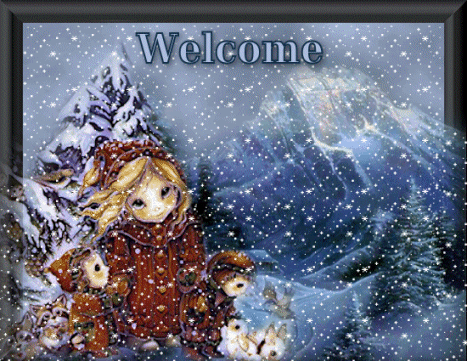By Keeley Bassette (Waterspirit Clan) and Rita Sharpback (Buffalo Clan)
retold by Richard L. Dieterle
Commentary. The story repeats itself in at least three parts:
Spiritual Status:
she has a holy appearance
Turtle is a great spirit
she is demoted to an animal
Pelt:
pure white hair
Turtle's skin is wrinkled
jet black hair
Aesthetics:
she is beautiful and smells of flowers
Turtle is ugly
she has a repulsive odor
Desirability:
men court her
Turtle courts her
men avoid her
Sight and Rejection:
she rejects them, preferring to gaze at her own reflection
she rejects Turtle and ridicules him for being ugly
when men see her, they will turn away

In a village long ago a woman gave birth to a girl with pure white hair. She grew up to be beautiful beyond compare, and because of her white hair, she was thought to be very holy. Men would often court her, but she showed no interest in them, preferring to gaze at her own reflection in still waters. She loved the smell of flowers and would rub their perfumed petals on her skin and hair.
One day a strange looking man showed up and was very keen to court her. She laughed at him, scolding him for his ugliness — yet he was not a mere man, but one of the great spirits, Turtle. Turtle shed his wrinkled outer skin and appeared in all his glory. He decreed, "Since you rejected one of the great spirits, you shall be transformed into a lowly animal! When people see you, they will turn away from your repulsive odor." She began to shrink, and she became covered with little black hairs. The only trace left of her beautiful white hair was the furry white stripe down her back. She became the first of her race, the race of skunks (gušge) who live to this day. [1]
The Hocak myth turns more on the dichotomy of inner versus outer excellence. She is transformed into the reverse of Turtle, positive on the outside, negative on the inside. When she gazes at the water creature (Turtle), she sees a reversed or mirrored image of herself, but does not recognize it. Her perception itself is true superficially, but false cognitively. This false perception derives from false values, and it is these that break her contact with the holy, with the spirits as exemplified by Turtle, so that even her holy appearance gets reversed (white to black). The inconsistency of her exterior perfection and interior imperfection is also reflected in her inconsistent and contradictory coloring. Her nature is similarly contradictory: she rejects the outer imperfect by accepting an inner imperfection, and accepts an outer perfection in herself only because she rejects the inner perfection that ironically accepts the dichotomy of appearance and reality. In other words, her imperfection is the belief that there can be no dichotomy between appearance and reality. her failure of understanding causes her to reject a great spirit whose appearance masks his reality. So the dichotomy between her appearance and reality is modeled in her true nature (her spiritual understanding). It is the very dichotomy of appearance and reality upon which the spirit world is largely founded, as they seldom appear as they are. Thus her internal contradiction causes her to become one of the most profane of creatures.
Striped Skunk
The striped skunk belongs to the Mustelidae family (catchers of mice) along with ferrets, mink, and weasels even though skunks are omnivorous. The striped skunk is true to its name, both common and scientific. Its scientific name (mephitis mephitis) actually means "noxious gas, noxious gas". And the striped skunk has a very bold white stripe used as a warning to its smelly contents. A
Species: Mammal.
Habitat: Woods and fields throughout North America, except the deserts of the Southwest.
Enemies: Great horned owls and bobcats.
Diet: Skunks are omnivorous but they mostly eat insects. They also eat bird's eggs and fruit.
Fun facts: Skunks have poor vision but their smell and hearing is good. Also skunks are resistant to snake venom and can survive 10 times the venom needed to kill an animal of the same size. And a skunk can spray its musk accurately up to 10 feet and less accurately to about 16 feet.
Notes
[1] Keeley Bassette (Waterspirit Clan) and Rita Sharpback (Buffalo Clan), "How Skunks Came to Be," in David Lee Smith, Folklore of the Winnebago Tribe (Norman: University of Oklahoma Press, 1997) 93.












No comments:
Post a Comment